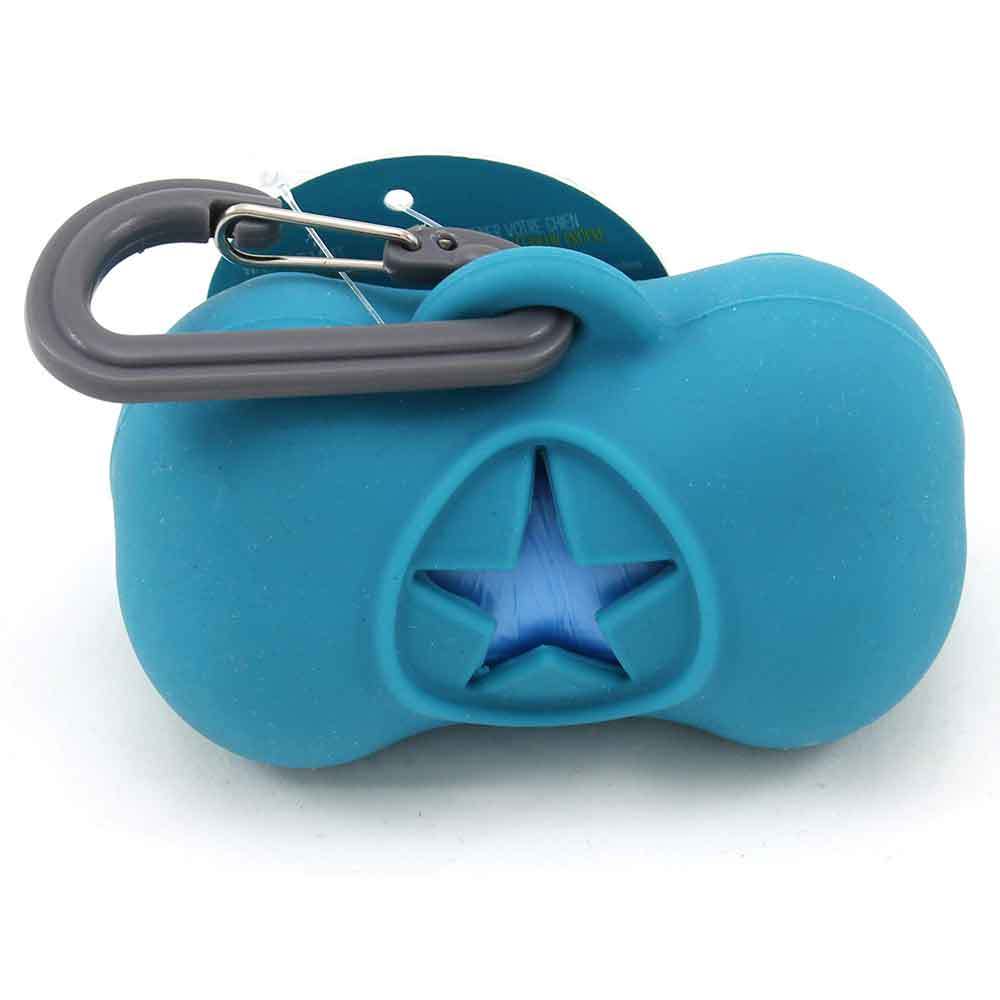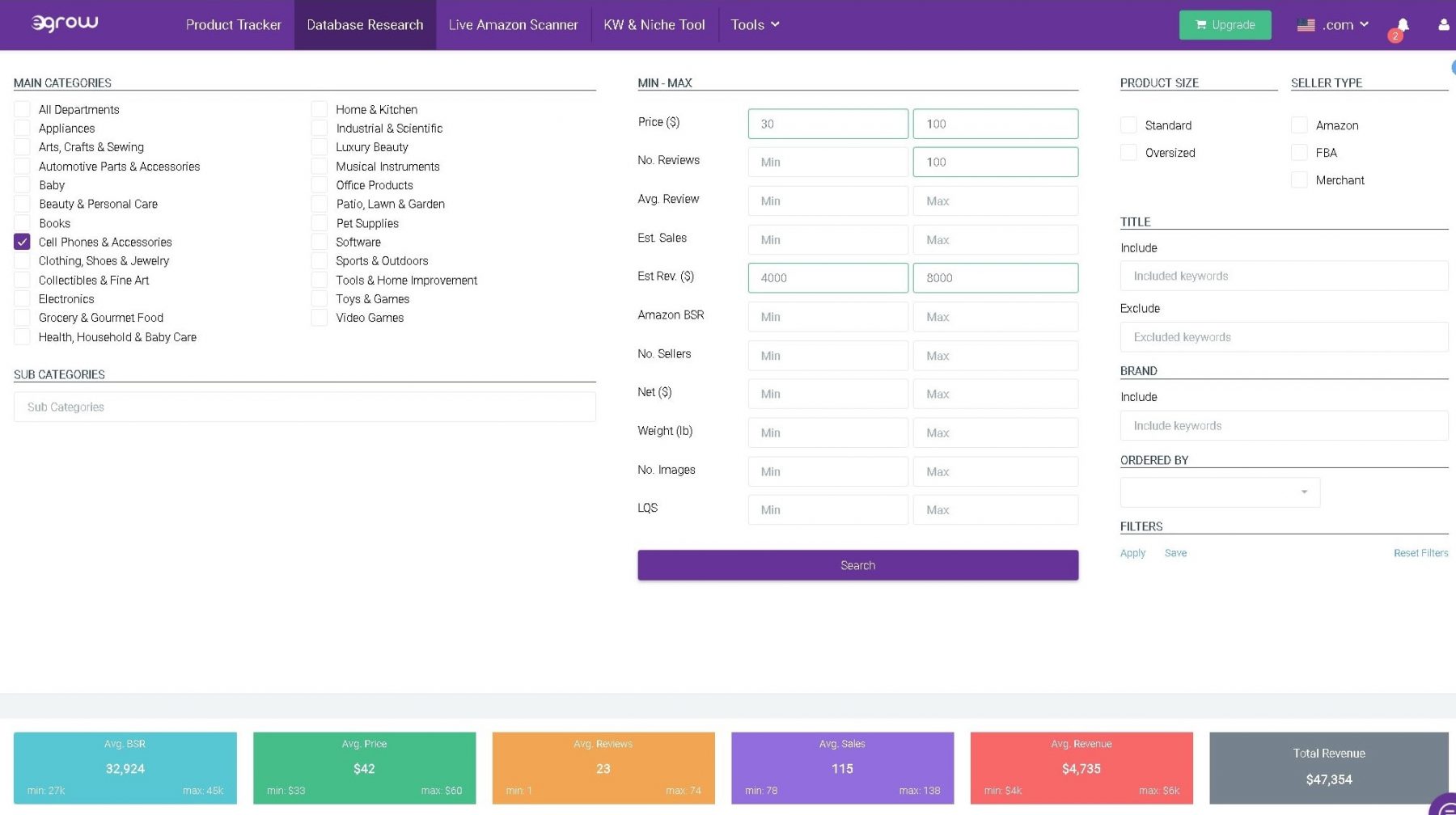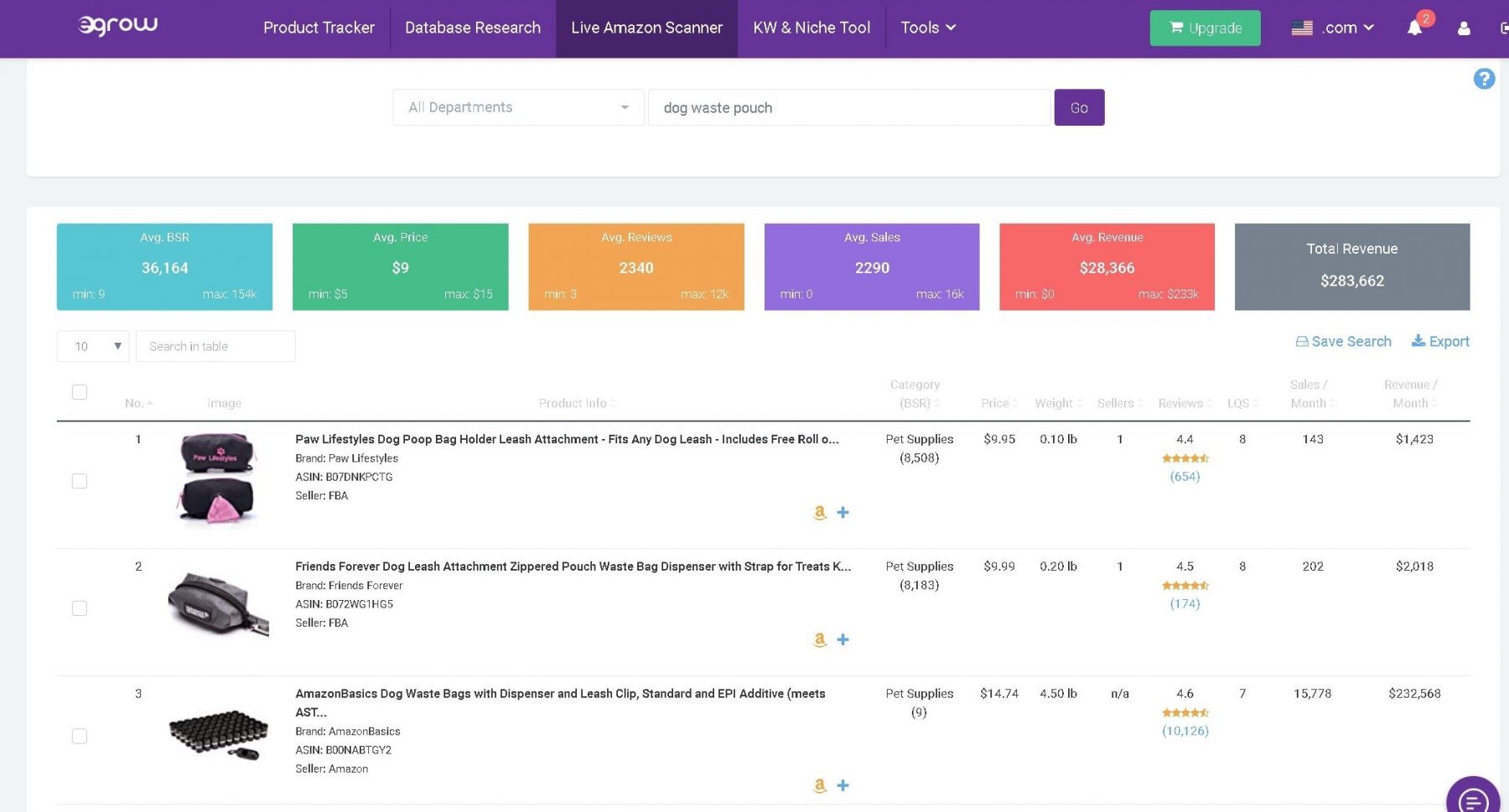Why Your Amazon Product Research Doesn’t Work

As Amazon sellers, we have one thing in common; we’re always searching for products that deliver a profit.
The problem is, many of us still use outdated product research techniques. While old methods worked in the past, today you need sophisticated and creative solutions to take your Private Label Products to the next level.
I’m going to show you how with a fresh perspective and a lot of elbow grease, how we find products that haven’t been taken over by competition in years. You can find great products to sell on Amazon, all with the help of Egrow.
These are methods suitable for both new and established Amazon sellers.
About the author
 Nils O is an Amazon Sourcing Expert based in Shenzhen, China. He moved to China in 2013, sourced over 1,000 products since then, and launched more than 200 items on Amazon with his partner. He helped numerous sellers find the right manufacturer in China.Nils provides invaluable Amazon Sourcing insights and tutorials for beginner and advanced Amazon Sellers on the Easy Peasy Sourcing Podcast.
Nils O is an Amazon Sourcing Expert based in Shenzhen, China. He moved to China in 2013, sourced over 1,000 products since then, and launched more than 200 items on Amazon with his partner. He helped numerous sellers find the right manufacturer in China.Nils provides invaluable Amazon Sourcing insights and tutorials for beginner and advanced Amazon Sellers on the Easy Peasy Sourcing Podcast.
Introducing Amazon Product Common Criteria
When I started as an Amazon seller, I spent a long time searching for the perfect first product.
Like a lot of people, I believed that the secret to Amazon selling success was sticking to the proven recipe of Common Criteria:
- The product must be lightweight
- It should fit in a shoebox
- There can’t be any moving parts
- It mustn’t be fragile
- It needs to be easy to manufacture, so there are no concerns about quality control
- It must sell between $10 and $20
- It must offer a $10 profit margin
Don’t get me wrong, these criteria make a lot of sense.
Who wants a product that’s expensive to ship, takes up a lot of warehouse space, is prone to breaking, and is difficult to sell?
The problem is that sticking to these criteria doesn’t always work. In fact, they could actually be damaging your business.
Thankfully, I discovered this early on.
The Problem with Common Criteria
My first product wasn’t minky baby blankets, luxury pillows, or bamboo cutting boards.
It was a pouch designed to carry refuse bags for cleaning up after dogs.

Yes, my perfect product was a dog poop bag holder.
The product’s design was simple, and it was made out of silicon. That meant it was lightweight, easy to manufacture and definitely not fragile.
Amazon listings reassured me that similar products were selling for $20, and after a few initial inquiries, I discovered that it could be produced, packaged and shipped for a mere $10. More, at the time of research, it was a great example of a high demand, low competition product.
Everything was great. However, just before I ordered a batch, I was saved by my first hustle.
Before getting into selling, I’d worked as a Product Sourcer in China, helping Amazon sellers find the best Chinese manufacturing partners for their Private Label Businesses.
After finding my perfect product, I kept it under wraps. However, I was surprised when new clients seeking my Product Sourcing services started to ask my help to find a manufacturer for their own dog poop bag holders.
By the third call, I knew I had to go back to the drawing board.
However, despite abandoning the product, over the next three months, I kept tabs on the dog poop bag holder’s performance. I saw a steady increase in the number of sellers, and a steady decrease in the product’s sale price from $20 to $10, wiping out any potential profit.
I wondered what the problem was.
Had my email been hacked?
The answer was much simpler. By matching all of the common criteria, sourcing, this product was just too easy. Anyone looking for products using the common criteria technique was as likely to find it as I was.
That brought me to the first and most important lesson you can learn as an Amazon Seller: products are only successful if they’re making you a profit.
If your product researching criteria don’t help you make a profit, then it doesn’t work.
Amazon Product Criteria Reimagined
I went back to the drawing board and had a crazy idea. Maybe I could get ahead of competitors by revising the Common Criteria.
Funnily enough, it worked.

Despite what other Amazon gurus may tell you, the obstacles avoided by sticking to the common criteria are actually easy to overcome.
You just need to put in the legwork. Here’s what I found worked:
- Embrace higher prices. Don’t restrict your products to the $10 to $20 price range. Many Amazon “experts” will tell you that low selling price ranges are the best way to keep your manufacturing costs down. They’re not always right. Higher value goods often require lower minimum orders, and they can deliver much higher profits.
- Stop worrying about products breaking. Amazon customers buy fragile products. They don’t break because they’re fragile, they break because they’re not packaged properly. With the right sourcing approach, you can find effective local packaging solutions that will minimize breakages.
- Size isn’t everything. It’s cheaper to ship and store products that fit into a shoebox, but there are enormous opportunities in selling oversized products. While the cost of shipping can be inhibitive, you can always reduce your costs by transporting goods by sea or rail. This can be intimidating for first time sellers, but with the right sourcing agent, it’s not impossible to achieve.
- Wisdom isn’t always simplicity. Don’t avoid complex products. A lot of Amazon’s best-sellers are electronics and products with moving parts. Instead of worrying about faulty products, have a third party perform a quality control before committing to bulk order. Review samples and get electrical certifications independently verified. The low costs for that will surprise you.
By disregarding restrictive Common Criteria, you can and will find products that your competitors would never dream of considering. More importantly, you can use this method to establish long term revenue streams.
Your New Product Criteria
Now the myths of common criteria have been deconstructed, you can start leveraging your competitors’ lack of creativity to your advantage.
I’ve found that one of the easiest ways to do this is with this New Product Criteria. When you’re searching for a new product, do the opposite of what the Common Criteria recommend.
- Find a product that is not easy to manufacture or copy
- Consider it even if it doesn’t fit in a shoebox
- Don’t limit yourself to durable or light goods
- See if it’s complex enough to put off your competition
- Go for products with a higher price point
- Make it something that you’d never think up without a lot of research
Using the method, my partner and I launched over 200 products over the last four years that competition did not even consider taking over.
Product Discovery with Egrow’s Database Research Tools
With refreshed product criteria, you can now scour Product Databases with Database Research Tools to find new product opportunities.

To maximize product discovery, I recommend that you don’t solely rely on keyword searches. It’s much better to start with Database Research. The difference between Database Research and Keyword Searches are explained well in this blog post, but are fundamentally this:
- Database Research enables you to look at every product that matches your criteria in a range of categories.
This means you can discover high demand, but low competition products that you didn’t know existed.
- Keyword Research returns a limited cross-section of Amazon’s market database that is limited to the products you can imagine.
Egrow’s FBA Sellers Tools are the only once on the market that allow you to access a significant portion of the Amazon market database without a paid subscription.
That makes it the best Jungle Scout free alternative, and arguably more useful than Jungle Scout’s free trial, which only offers keyword search functionality.
While the subscription version provides richer data than the free trial, if you’re just starting out, it’s a great way to learn the ropes.
Applying New Product Criteria to an Egrow Database Search
If you haven’t already, sign up and install the Egrow Chrome Browser extension now.

Next, decide on the country that you want to sell in. Egrow offers eleven Amazon marketplaces, including the United States, Germany, the United Kingdom, and Australia. If you’re not sure about which country to sell in, use the opportunity to complete some research in more than one market and find the best opportunities.
For instance, while Australia’s Amazon Marketplace is growing fast, it’s not as mature as the United States or European countries. This means that the market offers great opportunities that you won’t find elsewhere.
Once you have picked a country, settle on a range of product categories. These can be anything from Home & Garden, Pet Supplies, Beauty Products, and more. If you already have existing knowledge in one category, use that to your advantage, but I also recommend using considering a few.
When choosing product categories, make sure you know which categories are gated and which aren’t. To sell products in gated categories, you will need to apply for permission from Amazon.
I personally believe that getting ungated in categories is another barrier to entry for the competition to your market so you might consider taking this extra step.
Once you’ve picked your categories, you can apply the New Product Criteria to search filter in the following fields:
- Price. Use a wide price range and don’t be put off by going over $20.
- Number of Reviews. Go for a minimum of ten reviews and a maximum of between 50 and 100. Products with too few reviews will have a limited data history, making it impossible to assess their performance.
Products with more than 100 reviews are often too competitive.
- Estimated revenue. Estimated revenue shows you how much a product makes in sales each month. Rather than trying to find your own unicorn, keep the values realistic, but still profitable.
Once you’re finished, go ahead and search! You’ll find swathes of products, and brilliant opportunities that you probably never imagined.
Put in the Work
This part of the research requires commitment. The more individual listings you go through, the greater the chance that you’ll find the perfect product.
When you’re going through listings, assess whether each product fulfills the Common Criteria, or it deviates from them.
Maybe you’ve found a product that fits your revenue range, but it’s large and breakable, for instance, terrariums and ceramic sculptures of watermelons. Investigate it. It’s more than likely that your competitors won’t, and there might be a market for it!
Make sure that you keep lists of your potential products. Once you have enough, use Egrow’s Live Amazon Scanner tab to check the market.
It helps you assess whether your chosen products are niche products.

Never lose sight of competitivity. If you are developing a new Private Label Product, check existing sellers’ reviews, whether competition is made up of well established, dominant brands, and make sure that the product isn’t copyrighted or patented.
It takes some work, but it’s worth it.
Stay Ahead of the Game
Amazon FBA sellers are always devising new strategies to stay ahead of the competition.
My students find it easiest to keep ahead of the game by using the latest products and finding new creative ways to conduct their product research.
You too can make sure that you’re always up to date with the most advanced, and latest Amazon product research techniques.
I invite you to tune into my content at the Easy Peasy Sourcing Podcast.
Are you interested in the best sourcing hacks I learned while importing more than 1,000 products from China? Then my FREE web class right for you!
Click HERE and find out “How to Source your product in China, without getting screwed by Alibaba Suppliers”.


